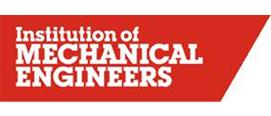- View more resources from this publisher
 Institution of Mechanical Engineers
Institution of Mechanical Engineers
How Nuclear Fusion Works
This film, from the Institute of Mechanical Engineers, explains the process of nuclear fusion. Culham Centre for Fusion Energy is one of the world's leading fusion research laboratories, where scientists and engineers are working with partners around the globe to develop fusion as a new source of clean energy for tomorrow's power stations. In this film, scientists from the centre describe some advantages of fusion over other forms of power generation:
•No carbon emissions. The only byproducts of fusion reactions are small amounts of helium, which is an inert gas that will not add to atmospheric pollution.
•Abundant fuels. Deuterium can be extracted from water and tritium is produced from lithium, which is found in the earth's crust.
•Energy efficiency. One kilogram of fusion fuel can provide the same amount of energy as 10 million kilograms of fossil fuel.
•No long-lived radioactive waste. Only plant components become radioactive and these will be safe to recycle or dispose of conventionally within 100 years.
•Safety. The small amounts of fuel used in fusion devices (about the weight of a postage stamp at any one time) means that a large-scale nuclear accident is not possible.
Show health and safety information
Please be aware that resources have been published on the website in the form that they were originally supplied. This means that procedures reflect general practice and standards applicable at the time resources were produced and cannot be assumed to be acceptable today. Website users are fully responsible for ensuring that any activity, including practical work, which they carry out is in accordance with current regulations related to health and safety and that an appropriate risk assessment has been carried out.




